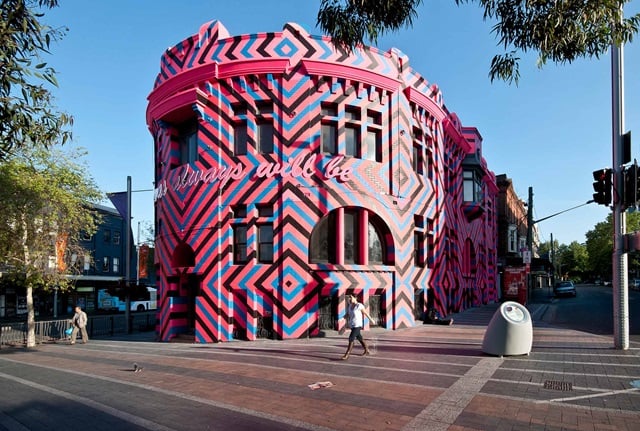


This 1818 obelisk is the zero point from which all the road distances in New South Wales are measured.
Artwork description
The Obelisk of Distances is a tall, tapering shaft of sandstone around 6m high on a rectangular base and pedestal. It is set below street level, approached on both sides by flights of steps and surrounded by a ring of wrought iron railing.
Erected in 1818 as an official starting point for measuring all the road distances in NSW, the Obelisk of Distances continues to perform this function today. The NSW State heritage Inventory listing for Macquarie Place notes that, “With few exceptions, roads emanating from Sydney, particularly the ‘Great Roads’ continue to be measured from the Macquarie Place Obelisk.”
Also known as the Macquarie Obelisk, it was erected by Governor Macquarie in what was then the geographic centre point of Sydney.
The monument was also the ‘symbolic peg’ indicating the furthest extent of the British Empire in the early 1800s. From a contemporary perspective it also reflects the process of superimposing European notions of time, space and ownership on the antipodean environment.
The obelisk is apparently the earliest surviving monument in the colony, probably built by convict labour.
The once prominent position of the obelisk has been eroded over time by the encroachment of roads. There was originally a surrounding wall which had design elements reflecting those on the obelisk itself.
Artist
Francis Greenway (1777–1837) was an English architect transported to Australia for the crime of forgery, arriving in Sydney in 1814. In NSW he worked for the Governor, Lachlan Macquarie, as Australia’s first government architect and is well known for buildings such as St James’ Church Sydney and Hyde Park Barracks, Sydney.
Conservation
Minor conservation works have been carried out over the years starting as early as 1895–1901.
Repairs in 1916 included work on the ornamental steps and the stonework surrounding the monument.
In 1966 repair work was carried out after damage was caused by a motor vehicle.
Restoration works in 2007 fixed underground drainage to ensure pooled water could not be drawn up into the stone and cause damage.
In 2009 the historic inscription legibility was improved and old pointing was removed and replaced with sound lime-based mortars to further keep water out of the monument. The sandstone was consolidated to strengthen the stone and to slow weathering. The work also included cleaning, biocidal treatment, coating reduction, toning of bare stone surfaces and desalination.







